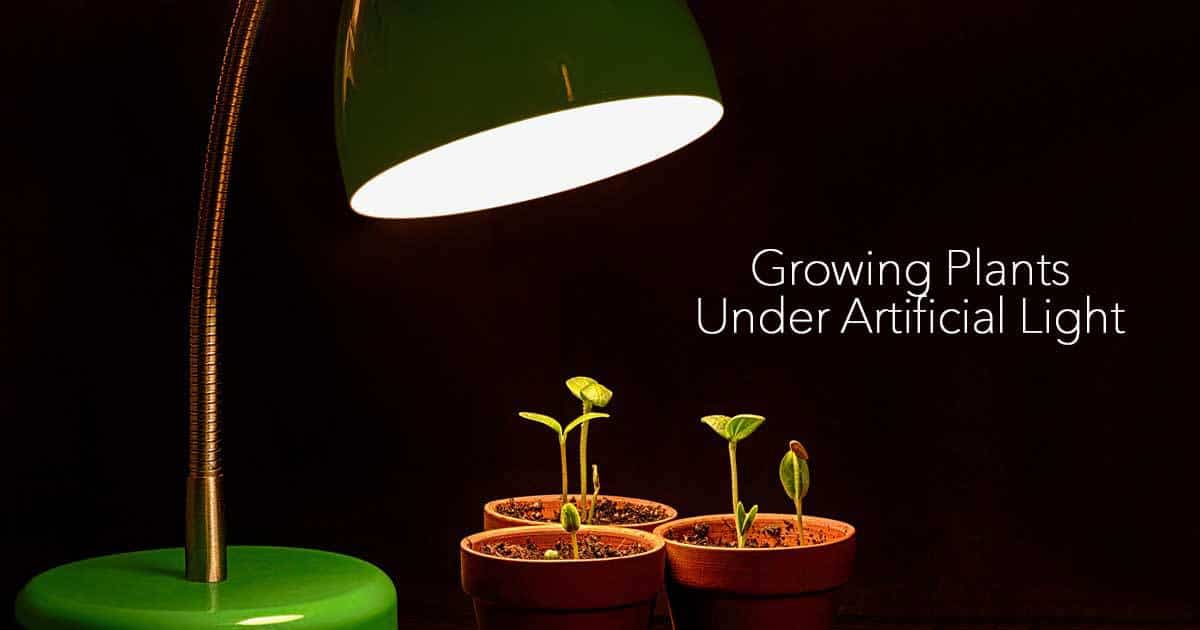Orchids are one of the most popular houseplants, and with good reason. They’re stunning, long-lived, and relatively easy to care for. But what about growing orchids under artificial light?
Can they thrive in this type of environment?
The short answer is yes! Orchids can be grown under artificial light alone, but there are a few things you need to keep in mind.
First, it’s important to choose the right type of artificial light. Orchids need bright, indirect light, so fluorescent bulbs are a good option. Second, you’ll need to provide your orchid with 12-14 hours of light per day.
Finally, be sure to water your orchid regularly; it will need more water than usual when grown under artificial lights.
If you’re an orchid lover, you might be wondering if it’s possible to grow these beautiful flowers under artificial light alone. The answer is yes! Orchids can thrive in a variety of lighting conditions, including artificial light.
There are a few things to keep in mind if you want to grow orchids under artificial light. First, make sure the light fixture you choose is designed for plants and provides the correct type of light (most orchids prefer bright, indirect light). Second, be sure to give your orchids enough light – they will need at least 12 hours of light per day.
Finally, don’t forget to water your orchids regularly – they will still need moisture even if they’re not getting any natural sunlight.
With a little care and attention, you can successfully grow orchids under artificial light. These flowers are truly versatile and can add beauty to any indoor space.

Credit: plantcaretoday.com
Can Orchids Survive on Artificial Light?
Yes, orchids can survive on artificial light. In fact, many orchids are grown under artificial lights in commercial greenhouses. The key to success is to provide the right type and amount of light for your particular species of orchid.
Different types of orchids require different amounts of light. For example, phalaenopsis orchids (the most common type sold in stores) do well with 12-16 hours of bright, indirect light each day. On the other hand, cattleya orchids need much brighter light, around 14-16 hours per day.
If you’re not sure how much light your orchid needs, ask a nursery staff member for advice before purchasing the plant.
Once you have your Orchid set up at home under the correct lighting conditions, it’s important to provide some additional humidity by misting the leaves daily and using a pebble tray filled with water beneath the pot. With proper care, your Orchid should thrive and bloom for years to come!
Can Orchids Grow Without Natural Light?
While orchids can grow without natural light, they will not thrive. Orchids need a minimum of 12 hours of sunlight each day to bloom and stay healthy. Without adequate sunlight, the plants will become leggy and weak, and the flowers will be small and fewer in number.
If you want to grow orchids indoors, place them near a sunny window where they will receive at least 6-8 hours of direct sunlight each day.
Can Plants Grow in Artificial Light Instead of Sunlight?
Yes, plants can grow in artificial light instead of sunlight. Artificial light sources, such as fluorescent and LED lights, can provide the necessary wavelengths of light for plant growth. However, it is important to note that not all artificial light sources are created equal.
For example, incandescent bulbs emit more heat than light, which can actually be detrimental to plant growth.
Can an Orchid Grow in a Windowless Room?
Yes, an orchid can grow in a windowless room. However, it will need some artificial light to thrive. The best option would be to use fluorescent bulbs placed close to the plant.
Orchids also prefer high humidity, so you may need to mist the plant regularly or set up a humidifier in the room.
Orchid houseplants suited for artificial light – Phalaenopsis, Oncidiums & more under lights!
Phalaenopsis Orchid Artificial Light
If you want to add a touch of elegance and luxury to your home, then consider getting an artificial Phalaenopsis orchid. These beautiful flowers are perfect for any room in your house, and they don’t require any natural sunlight to thrive.
When choosing an artificial orchid, it’s important to pick one that looks as realistic as possible.
Look for a plant with lifelike blooms and leaves, and make sure the pot is also convincing. Once you have your orchid, find a spot in your home with bright, indirect light. These plants do best in moderate light conditions – too much sun will cause the leaves to fade, while not enough light will prevent the flowers from blooming.
Watering is another important aspect of care for your artificial orchid. Be sure to check the soil regularly and mist the leaves if necessary – these plants like humidity! With proper care, your artificial Phalaenopsis orchid will bring beauty and style to your home for years to come.
Can Orchids Grow in Office Light
If you have an office job, you may be wondering if you can grow orchids in the light that is available. The answer is yes! Orchids can grow in office light, as long as the light is bright enough and there are no drafts.
The best place to put your orchid is near a window where it will get plenty of light. If possible, try to rotate the plant so that it gets evenly lit on all sides. This will help prevent any one side from getting too much or too little light.
Orchids need at least 12 hours of darkness each day in order to bloom, so if your office has good lighting, you may want to invest in a timer so that the lights go off automatically at night. Orchids also like humidity, so misting the leaves with water once a day will help them thrive.
With a little bit of care, you can successfully grow orchids in your office!
Phalaenopsis Orchid Light Requirements
Phalaenopsis orchids are one of the most popular types of Orchids. They are known for their beautiful flowers and long-lasting blooms. Phalaenopsis orchids are native to Southeast Asia and can be found in many different colors, including white, pink, purple, and red.
When it comes to Phalaenopsis orchid care, one of the most important things to consider is light requirements. These Orchids prefer bright, indirect sunlight. If you live in an area with very little natural sunlight, you may need to supplement with artificial lighting.
The best way to provide your Orchid with the right amount of light is to place it near a east-facing window.
If you give your Phalaenopsis Orchid too much direct sunlight, the leaves will start to turn yellow and will eventually fall off. Too little light will cause the leaves to turn green and the plant will not bloom as often.
If you’re not sure whether your Orchid is getting enough light, check the leaves for color changes and wilting flowers. With proper care, your Phalaenopsis Orchid should bloom multiple times per year!
Orchid Light Requirements Chart
If you’re looking for a specific light requirement chart for orchids, look no further! Here is a comprehensive guide to the light requirements of different types of Orchids.
As a general rule, Orchids need bright, indirect sunlight.
They should be placed in an east- or west-facing window where they will receive several hours of natural daylight each day. If possible, avoid placing them in direct sun, as this can scorch their leaves.
Different Orchid species have different light requirements.
For example, Phalaenopsis (moth orchids) do best in bright conditions but can tolerate lower levels of light than otherOrchid varieties. On the other hand, Cattleya (lady Slipper orchids) require more intense light and should be placed in a south-facing window if possible.
To make sure your Orchid is getting the right amount of light, it’s important to monitor its leaves.
If the leaves are yellowing or starting to brown at the edges, this is a sign that it’s not getting enough light and needs to be moved to a brighter spot.
Will LED Lights Burn Orchids if Used as the Sole Light Source?
LED lights are an ideal choice as the sole light source for orchids. Unlike traditional bulbs, LED lights emit minimal heat, reducing the risk of burning delicate orchid foliage. Energy-efficient and long-lasting, orchids thrive under LED lights, ensuring healthy growth and vibrant blooms. Embrace the benefits of orchids and led light for a stunning indoor garden display.
Conclusion
Orchids are a type of flower that can be difficult to grow. They require a lot of light and humidity, and they often need to be re-potted frequently. However, it is possible to grow orchids under artificial light alone if you take the proper precautions.
Make sure to use full-spectrum bulbs that emit at least 2,000 lumens per square foot, and keep the lights on for 12-14 hours per day. Water your orchids regularly, and mist them frequently to maintain the proper level of humidity. With proper care, you can successfully grow orchids under artificial light alone!






